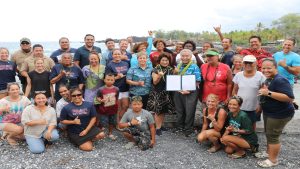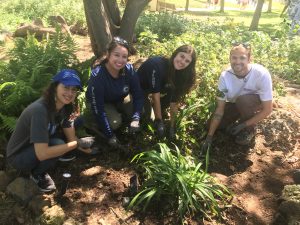Sustainable Hawai‘i: Being pono for the next generation
Posted on Nov 8, 2022 in Capitol Connection, Featured, MainThe bottom line: The Ige administration is leaving a legacy of environmental protection in its Sustainable Hawai‘i Initiative to provide a safer, cleaner future for us all. Hawai‘i has become a recognized leader in the fight against climate change by our efforts to take care of our island home. The plan includes •Protecting 30% of our highest priority watersheds by 2030; • Effectively managing 30% of our nearshore ocean waters by 2030; • Implementing the first Hawai‘i Biosecurity Plan by 2027; • Achieving 100% renewable electricity by 2045; • Doubling local food production.
“I’m very proud that, with the governor’s leadership and support, we’ve been able to make significant progress,” said Suzanne Case, Department of Land and Natural Resources director. “There’s a public sense that things need to change. The fact that Hawai‘i is a leader in addressing climate change is a good microcosm for the world. We have to do it ourselves. We can’t wait for anyone else. If everyone does their part, we’ll have a chance.” During the Ige administration, the rate of watershed protection doubled, more effective instream flow standards were enacted, nearshore ocean management improved, and lands for conservation and recreation increased. The state also produced the first Interagency Biosecurity Plan and committed to more nature-based solutions as well as increasing agricultural lands for local food production.
Also, DLNR is part of the larger community-based effort to manage tourism through HTA’s Destination Management Action Plans. That includes state parks at the Diamond Head State Monument, Hāʻena State Park on Kaua‘i and Waiʻānapanapa State Park on Maui requiring advance reservations for out-of-state visitors. Hawai‘i residents will continue to enjoy free access without reservations. DLNR also worked with Miloli‘i residents on Hawai‘i island to develop rules to protect resources. “Community-based rules, in cooperation with government, are the way we can combine our past, present and future in a collaborative way. It’s a very powerful tool,” said Case.
Read more in the November/December Capitol Connection newsletter.

